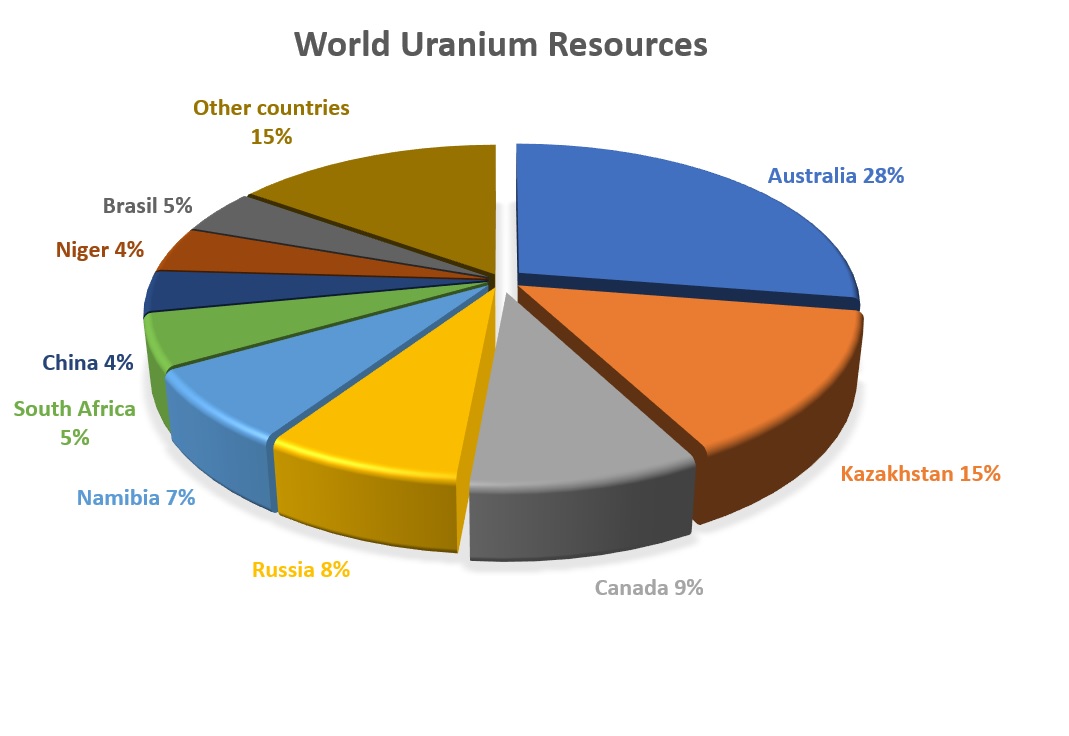Uranium

It is generally found in rocks and waters in trace amounts. In the existing oxidation conditions above and below the groundwater table, secondary uranium minerals containing +6 uranium can easily dissolve (with increasing pH in the water) and are transported into the solution in the form of uranyl ions and transported over long distances with groundwater. When they meet the appropriate reduction (reduction) conditions during transportation, they are reduced to +4 uranium and deposited as Uraninite and Pitchblen (uranium oxide containing ore) and thus uranium deposits are formed. The main uranium minerals are uraninite, autinite, pitchblend, tobernit and co-nit. In the mining sector, during the evaluation of a uranium field; U3O8 grade, reserves, mineral processing and ore recovery technology of the ore are evaluated as a whole. For this reason, uranium ore deposits that have a reserve of 10,000 tons and a grade of more than 0.02% U3O8 are currently operable. Since the extracted uranium mines contain 0.1% -1% U3O8, the extracted mine is subjected to a pre-enrichment process. In addition to the use of uranium as a nuclear power plant fuel and in making nuclear explosives, uranyl acetate is also used in analytical applications, armor coating, shipbuilding and aircraft construction, to color the ceramics and to make plutonium hydrogen bomb.


As of the end of 2021, there is 6.1 million tons of uranium resources in the world and 49,355 tons were produced in 2022. Around two-thirds of the world's uranium production is from from Kazakhstan, Canada and Australia. More than 55% uranium is produced by in situ leaching. In 2022 Kazakhstan produced the largest share of uranium (43% of world supply), followed by Canada (15%) and Namibia (11%).
With the discoveries of MTA in recent years, Türkiye’s uranium (U3O8) resource (with 0.017-0.24% grade) has reached to 54,978 tons. The provinces where the discoveries were made are Manisa, Uşak, Yozgat, Aydın, Nevşehir and Malatya. No study has been conducted on the economics and technological gains of MTA discoveries. In addition to these discoveries, 547.6 tons of 0.002-0.8% grade uranium reserves were identified in Aydın-Söke.
While uranium (U3O8) prices decreased in 2017, they increased continuously and reached their highest level in 2024.

Date of Update: 25 December 2024
Burada yer verilen bilgiler Bakanlığımız Web Sayfası kullanıcılarına bilgi verme amacıyla hazırlanmış olup bağlayıcı bir resmi belge niteliği taşımamaktadır.
The details presented here have been prepared with the aim of informing the users of the website of our Ministry, and do not possess the characteristics of official binding documents.


